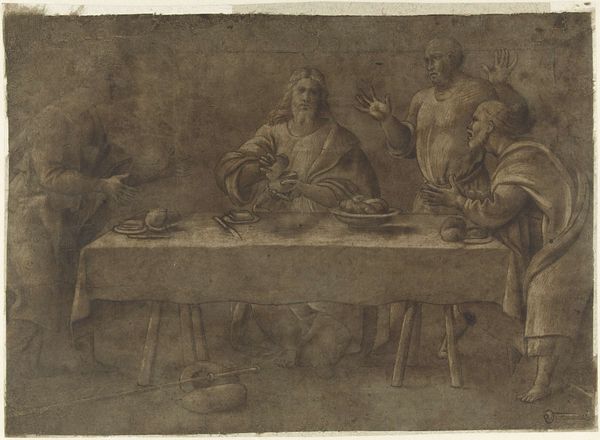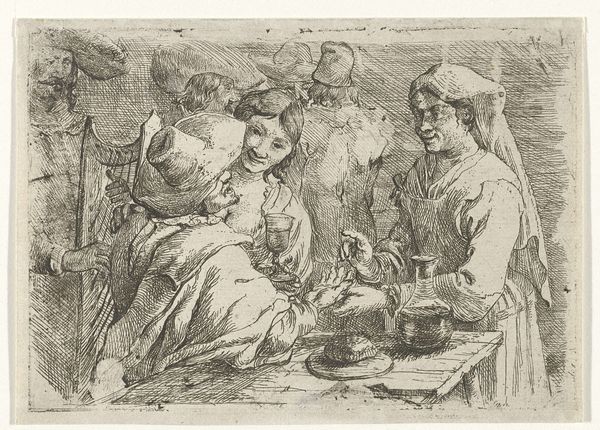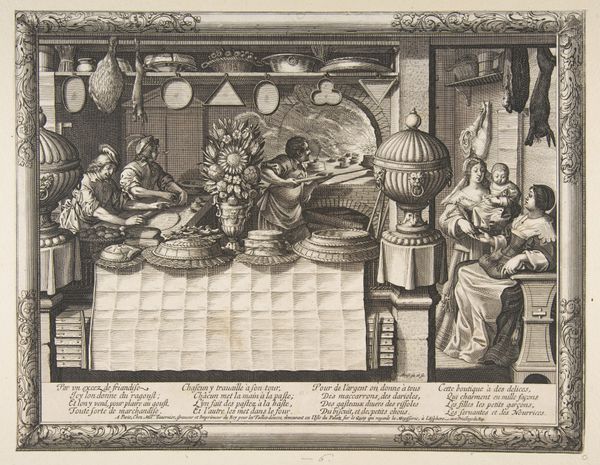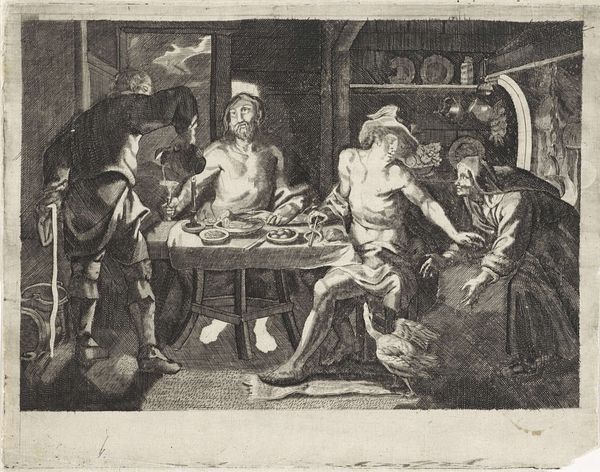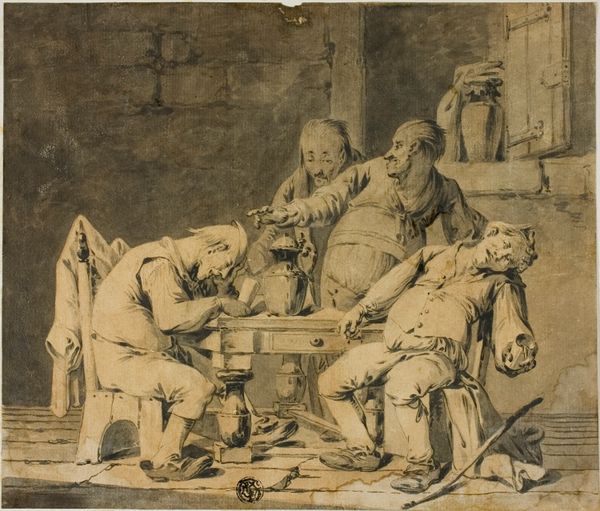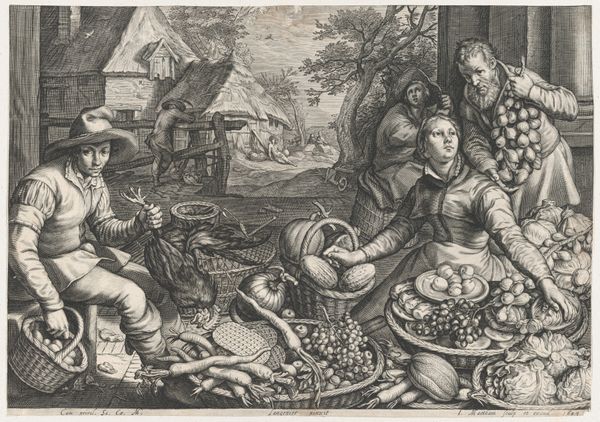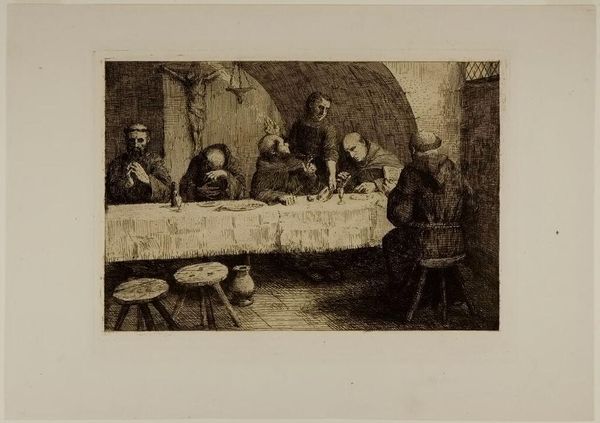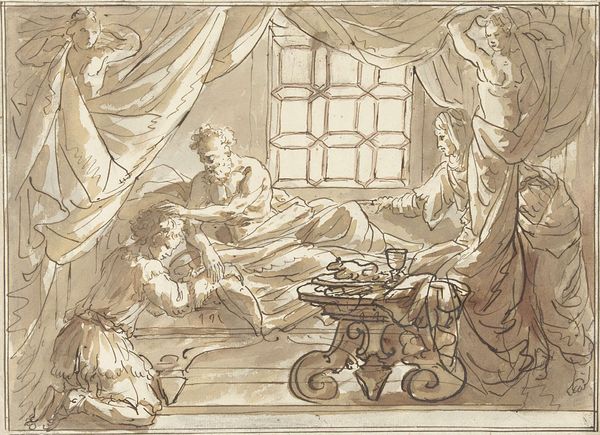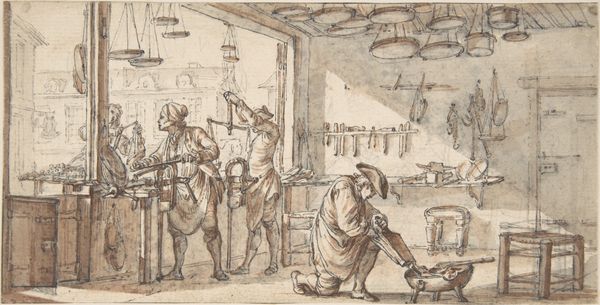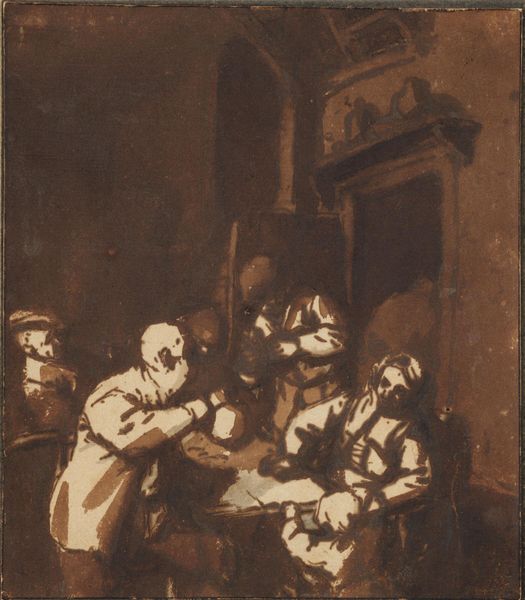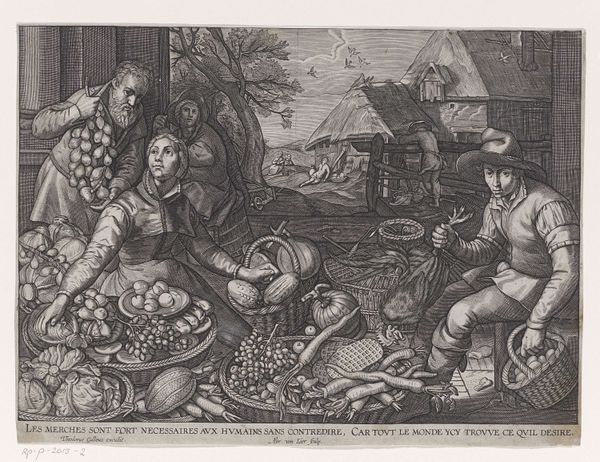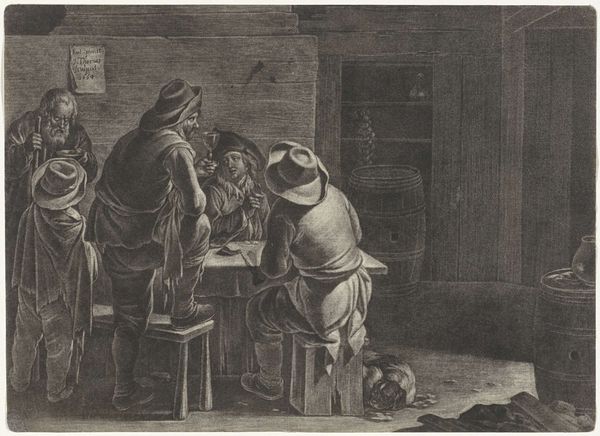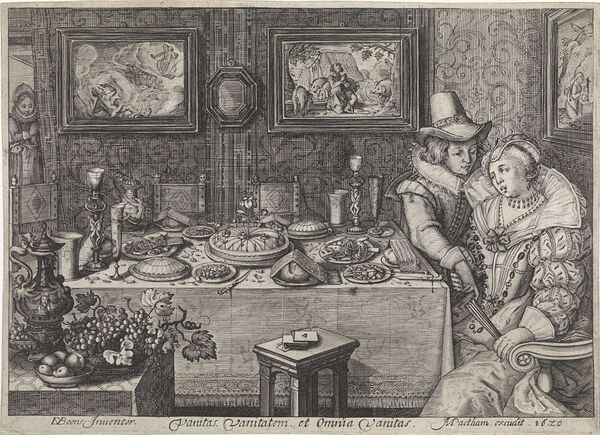
oil-paint
#
baroque
#
dutch-golden-age
#
oil-paint
#
oil painting
#
realism
Copyright: Public domain
Pieter Claesz made this tantalizing still life with oil on wood, sometime in the first half of the 17th century. Claesz was a master of depicting surfaces – the gleaming pewter plates, the shimmering glass, and of course, the succulent oysters. His skill lay in capturing the texture and weight of these objects through careful observation and the manipulation of paint. Look closely, and you’ll notice the precise rendering of light and shadow. The folded white tablecloth, likely linen, contrasts with the reflective surfaces of the silverware. But these are not just aesthetically pleasing objects; they're also imbued with social meaning. Oysters, wine, and lemons were luxury goods, symbolic of wealth and status in the Dutch Golden Age. The amount of labour involved in their production and transport is implied, a subtle reminder of the social and economic forces at play. By focusing on the tangible qualities of these materials, Claesz elevates the everyday to the extraordinary, blurring the lines between fine art and craft.
Comments
No comments
Be the first to comment and join the conversation on the ultimate creative platform.

